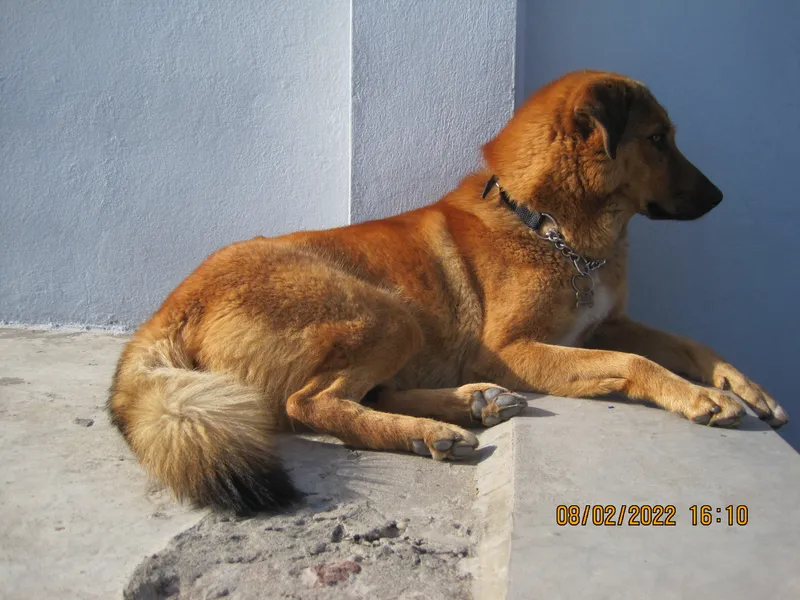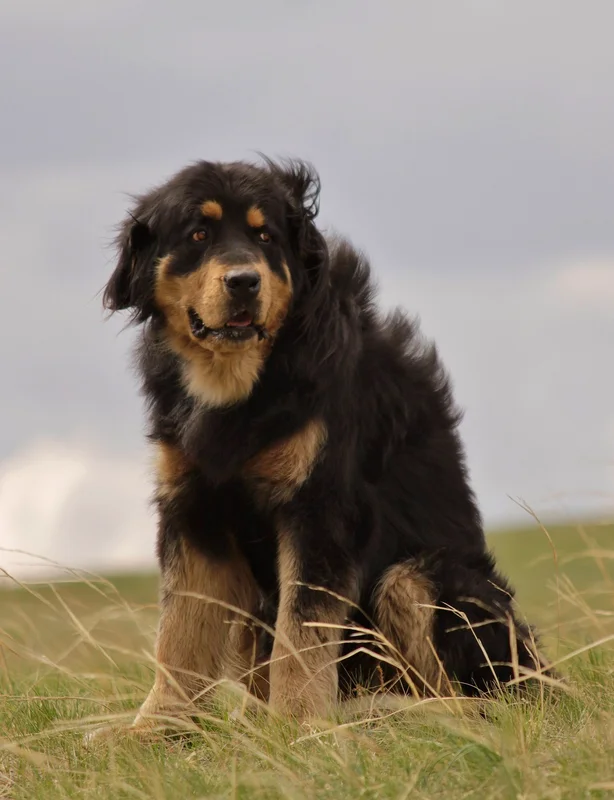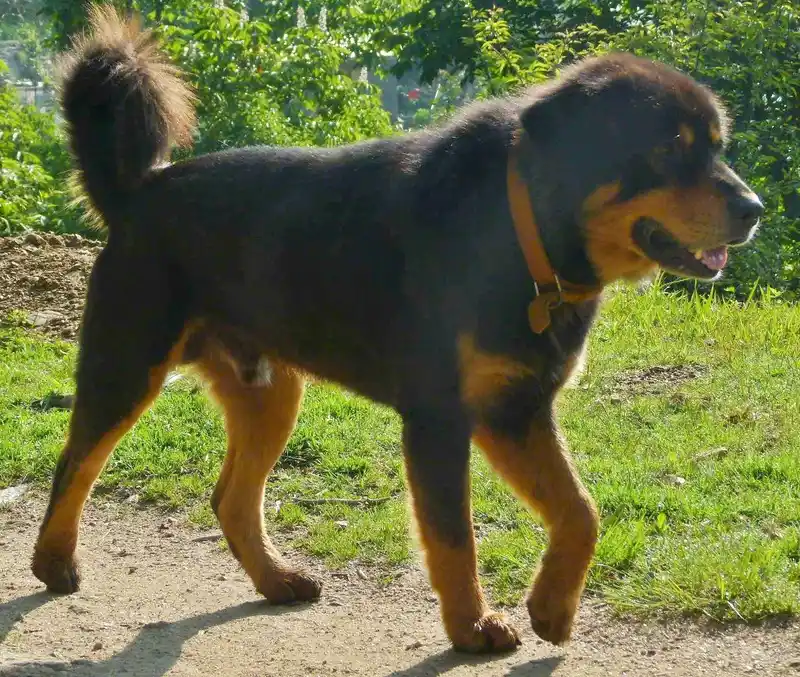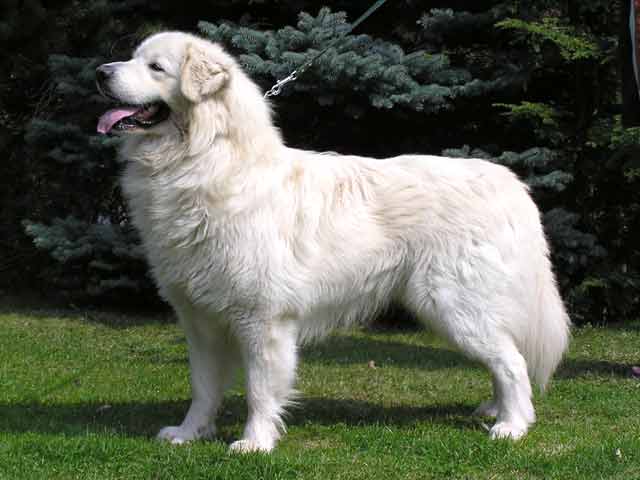Alaskan Malamute
The Alaskan Malamute is a large, powerful breed known for its strength and endurance. Originally bred for hauling heavy freight, they are affectionate, loyal, and require ample exercise. With a thick double coat and a friendly demeanor, they thrive in active households.
Overview
🐕Breed Overview
✨Key Traits
💡What Makes Alaskan Malamute Special
Alaskan Malamutes are characterized by their strength, endurance, and affectionate nature. They are powerful dogs, originally bred for heavy hauling, which gives them a robust and muscular build. Their thick double coat provides insulation against cold weather, making them well-suited for outdoor activities in winter.
Malamutes are known for their loyalty and devotion to their families, often forming strong bonds with their human companions. They are intelligent and capable of learning various tasks, but their independent nature can sometimes make training a challenge. Their playful and friendly demeanor makes them great companions, but they require ample exercise and mental stimulation to prevent boredom and destructive behaviors.
Malamutes are also known for their unique vocalizations, often communicating with a range of sounds rather than barking, which adds to their charm.
The Alaskan Malamute is a majestic and powerful breed, originally developed for hauling heavy freight in the harsh Arctic conditions of Alaska. With a strong, compact build, they stand between 23 to 25 inches tall and weigh between 75 to 85 pounds, making them one of the largest sled dog breeds. Their thick double coat, which comes in various shades including gray, black, and red, provides insulation against extreme cold, while their almond-shaped brown eyes convey a gentle yet intelligent expression.
Known for their friendly and affectionate nature, Malamutes are loyal companions who thrive in active households. They require ample exercise and mental stimulation, making them ideal for owners who enjoy outdoor activities like hiking, sledding, or running. Despite their friendly demeanor, they can be territorial and may exhibit aggression towards unfamiliar dogs or small animals due to their high prey drive.
Training an Alaskan Malamute can be a rewarding experience, but it requires patience and consistency, as they are known for their independent spirit. With proper socialization and training, they can become well-mannered family pets. Their history as working dogs means they excel in various canine sports, including weight pulling and agility.
Overall, the Alaskan Malamute is a remarkable breed that embodies strength, endurance, and a deep bond with their human companions.
🎉Fun Facts
Malamutes are known for their unique vocalizations, often 'talking' with a 'woo woo' sound instead of barking.
Malamutes can be excellent escape artists, so secure fencing is a must.
They have a strong instinct to dig, which can lead to interesting backyard landscapes.
Breed Characteristics
Family & Friends
Good Behavior
Get Up & Go
Household Harmony
Temperament & Personality
✨Key Traits
🐕Core Temperament
The temperament of the Alaskan Malamute is characterized by a blend of independence, loyalty, and playfulness. They are affectionate dogs that enjoy being around people and are known for their friendly nature.
However, their strong-willed personality can lead to challenges in training, as they may not always be eager to follow commands. Malamutes are generally good with children and can be playful companions, but their high prey drive means they may not be suitable for homes with small pets.
They are social animals that thrive on companionship and can become bored or destructive if left alone for long periods. With proper training and socialization, Malamutes can be well-mannered family pets that bring joy and laughter to their households.
💫Personality Profile
The Alaskan Malamute is known for its friendly and affectionate nature, making it a beloved family companion. They are social dogs that thrive on human interaction and enjoy being part of family activities.
Despite their friendly demeanor, they can be independent and strong-willed, requiring consistent training and socialization from an early age. Malamutes are playful and enjoy engaging in physical activities, but they can also exhibit a stubborn streak, making training a challenge at times.
Their high prey drive means they may chase smaller animals, so supervision around pets is essential. Overall, Malamutes are gentle giants with a playful spirit and a deep bond with their families.
🔊Vocal Tendencies
Alaskan Malamutes are generally quiet dogs, with a tendency to vocalize in unique ways. Instead of barking, they often 'talk' with a distinctive 'woo woo' sound, which can be quite endearing.
They may also howl, reminiscent of their wolf ancestors, especially when they are excited or want to communicate with their owners. While they are not excessive barkers, their vocalizations can be expressive and may vary depending on their mood or environment.
Overall, their noise level is moderate, making them suitable for families who appreciate a dog that communicates in its own special way.
Affection & Social Traits
Energy & Activity
Communication Style
Care Requirements
🏃♂️Exercise Requirements
Daily Exercise
The Alaskan Malamute requires a significant amount of daily exercise to maintain its physical and mental health. Ideally, they need at least 1 to 2 hours of vigorous activity each day. This can include long walks, runs, or engaging in dog sports such as sledding, weight pulling, or agility training.
Puppies should have shorter, more frequent play sessions to avoid overexertion, while adult dogs thrive on sustained exercise. Senior Malamutes may require less intense activity but still benefit from regular walks and playtime. Regular exercise helps prevent obesity, supports cardiovascular health, and reduces behavioral issues stemming from boredom or pent-up energy.
Insufficient exercise can lead to destructive behaviors, such as digging or chewing, as well as increased anxiety and frustration.
Preferred Activities
🏠Living & Adaptability
Space Requirements
Alaskan Malamutes thrive in environments that provide ample space for exercise and play. They are best suited for homes with large yards or access to open areas where they can run freely.
While they can adapt to apartment living, it requires a dedicated commitment to daily exercise and mental stimulation. Owners in smaller spaces should ensure their Malamute has regular access to parks or open fields.
The breed's size and energy level mean that confinement in small areas can lead to frustration and destructive behaviors. A securely fenced yard is essential to prevent them from wandering, as they have a strong prey drive.
Climate Preference
🍲Feeding Guide
Schedule
Food Types
Portion Size
Special Nutritional Needs
Alaskan Malamutes may benefit from a diet rich in protein and healthy fats to support their energy levels and muscle mass. It's important to monitor their weight and adjust portions accordingly, especially during shedding seasons when they may require additional nutrients for coat health. Some Malamutes may also have food sensitivities, so a high-quality, grain-free diet may be beneficial.
✨Grooming Requirements
Grooming Overview
The Alaskan Malamute has a thick double coat that requires regular grooming to keep it healthy and free of mats. During shedding seasons, which occur twice a year, they may require daily brushing to manage loose fur.
Outside of shedding periods, brushing once or twice a week is sufficient. Use a slicker brush and an undercoat rake to effectively remove dead hair and prevent matting.
Bathing should be done as needed, typically every few months, to avoid stripping the coat of its natural oils. Regular nail trimming and ear cleaning are also essential to maintain overall hygiene.
Care Schedule
Brush 1-2 times a week; during shedding season, brush daily; bathe as needed, typically every 2-3 months; trim nails every 2-4 weeks.
Health Profile
⚕️Health Care
Regular veterinary care is crucial for maintaining the health and lifespan of Alaskan Malamutes. Routine check-ups, vaccinations, and preventive treatments for parasites are essential.
Early detection of health issues through regular examinations can significantly impact their quality of life and longevity. Additionally, maintaining a balanced diet, providing adequate exercise, and monitoring for any signs of illness are vital components of their health care.
Health Issues Overview
⏳Average Lifespan
Genetic Factors
Genetics play a significant role in the lifespan of Alaskan Malamutes. Certain hereditary conditions, such as hip dysplasia and cataracts, can affect their overall health and longevity.
Responsible breeding practices that prioritize genetic diversity and health testing can help reduce the prevalence of these conditions. Potential owners should seek breeders who conduct health screenings and provide health guarantees for their puppies to ensure a healthier lineage.
Living Conditions
The lifespan of an Alaskan Malamute can be influenced by various environmental factors, including climate, living conditions, and exercise levels. Malamutes thrive in cooler climates, and excessive heat can lead to health issues such as heatstroke.
Providing a well-ventilated living space and access to cool areas during hot weather is essential. Regular exercise in a safe environment promotes overall health and longevity.
Social interactions with humans and other dogs also contribute positively to their well-being, reducing stress and anxiety, which can impact lifespan.
🏥Common Health Issues
Hip Dysplasia
Warning Signs
🔬Diagnosis
X-rays and physical examination by a veterinarian.
💊Treatment
Surgery or medication may be required in severe cases.
📝Management Tips
Maintain a healthy weight, provide joint supplements, and engage in low-impact exercise.
Cataracts
Warning Signs
🔬Diagnosis
Veterinary eye examination.
💊Treatment
Surgical removal may be necessary.
📝Management Tips
Regular eye check-ups and monitoring for changes in vision.
Elbow Dysplasia
Warning Signs
🔬Diagnosis
X-rays and veterinary evaluation.
💊Treatment
Surgery or medication may be required.
📝Management Tips
Weight management and controlled exercise.
Progressive Retinal Atrophy
Warning Signs
🔬Diagnosis
Veterinary eye examination.
💊Treatment
No cure; supportive care is recommended.
📝Management Tips
Regular monitoring and adjustments to living conditions as vision declines.
🛡️Preventive Care
🔬Hip Evaluation
Evaluates hip joint conformation and detects hip dysplasia.
📅 Every 1-2 years, starting at 2 years of age.
🔬Eye Examination
Assesses the eyes for hereditary conditions such as cataracts and retinal issues.
📅 Annually, starting at 1 year of age.
🔬Thyroid Function Test
Checks for thyroid function to detect hypothyroidism.
📅 Every 1-2 years, starting at 2 years of age.
🔬Elbow Evaluation
Evaluates elbow joint conformation and detects elbow dysplasia.
📅 Every 1-2 years, starting at 2 years of age.
Training
🧠Intelligence & Trainability
💪Work Drive
Alaskan Malamutes have a strong work drive and thrive when given tasks to complete. Their history as sled dogs means they enjoy activities that challenge their physical abilities and mental acuity.
Suitable activities include pulling sleds or carts, participating in weight pulling competitions, and engaging in canine sports like agility or obedience training. Providing them with jobs not only keeps them physically fit but also satisfies their need for mental stimulation, preventing boredom and associated behavioral issues.
⚠️Training Considerations
Alaskan Malamutes can exhibit behavioral challenges due to their strong independence and high prey drive. They may be stubborn and resistant to training, particularly if they do not see the point in a command.
Socialization is crucial, as they can be aggressive towards unfamiliar dogs or small animals. To overcome these challenges, consistent training methods that incorporate positive reinforcement are essential.
Engaging them in activities that stimulate their minds and bodies can help mitigate destructive behaviors. Providing clear boundaries and rules will also aid in managing their independent nature.
📝Training Tips
Training an Alaskan Malamute requires patience and consistency. Start with basic obedience commands and gradually introduce more complex tasks.
Use positive reinforcement techniques, such as treats and praise, to encourage desired behaviors. Socialization with other dogs and people from a young age is vital to prevent aggression and ensure they are well-adjusted.
Incorporating fun activities, like agility or weight pulling, can keep them engaged and motivated. Be prepared for a learning curve, as Malamutes may test boundaries and require firm, consistent leadership.
History & Heritage
📜Origin Story
The Alaskan Malamute's story begins with the Mahlemut tribe, who inhabited the harsh Arctic regions of Alaska. These dogs were bred to assist in hunting seals and polar bears, showcasing their strength and resilience.
As European explorers arrived in the 1700s, they noted the Malamute's exceptional abilities and the close bond between the dogs and their human companions. The breed gained prominence during the Klondike Gold Rush, where their strength was put to the test in hauling supplies.
Despite the challenges of crossbreeding, dedicated breeders preserved the Malamute's lineage, ensuring its survival and recognition as a distinct breed by the AKC in 1935.
⏳Development History
The Alaskan Malamute is one of the oldest Arctic sled dog breeds, with origins tracing back over 2,000 years to the Mahlemut tribe in Alaska. Initially bred for strength and endurance, these dogs were essential for hunting large game and transporting goods.
The breed faced challenges during the Klondike Gold Rush, leading to crossbreeding with other sled dog breeds, which threatened its purity. However, dedicated breeders in the 1920s and 1930s worked to restore the breed's traditional characteristics.
The American Kennel Club recognized the Alaskan Malamute in 1935, marking a significant milestone in its history.
🛡️Purpose & Historical Role
Originally bred for heavy freighting and hunting, the Alaskan Malamute served as a crucial partner for the Mahlemut tribe. Their ability to haul heavy loads over long distances made them indispensable in Arctic exploration and transportation. In modern times, they are still used for sledding, weight pulling, and other canine sports, but many also serve as beloved family pets.
🏺Cultural Significance
The Alaskan Malamute has deep cultural roots among the native Inuit people of Alaska, particularly the Mahlemut tribe, who relied on these dogs for hunting and hauling heavy loads. Their strength and endurance made them invaluable companions in the harsh Arctic environment.
The breed's historical significance is highlighted by its role in exploration, including aiding Admiral Richard Byrd during his expeditions to the South Pole. Today, the Alaskan Malamute is recognized as the official state dog of Alaska, symbolizing the state's rich heritage and connection to the Arctic.
Conservation Status
This breed is well-established with healthy population numbers.









